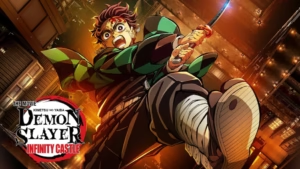1.”March Comes in Like a Lion” – Inspired by Real-Life Shogi Players

- Anime Overview: The anime follows Rei Kiriyama, a young professional shogi (Japanese chess) player struggling with loneliness, depression, and the pressure of competition.
- Real Inspiration:
- The story is influenced by real shogi prodigies like Toshiyuki Moriuchi and Yoshiharu Habu, both of whom started playing at a young age and faced personal struggles due to the intense nature of the game.
- The emotional challenges and social isolation Rei experiences are similar to what real-life players face.
- Many professional shogi players have spoken about mental health struggles, making the anime a realistOc portrayal of competitive stress.
2. “A Silent Voice” – Based on Real-Life Bullying Cases

- Anime Overview: The story follows Shoya Ishida, who bullies a deaf girl, Shoko Nishimiya, in elementary school. Later, he regrets his actions and tries to make amends.
- Real Inspiration:
- Yoshitoki Ōima, the manga’s author, was inspired by real-life discrimination cases against deaf and disabled students in Japan.
- The story highlights how bullying culture in Japanese schools often leads to severe consequences, including social ostracization and depression.
- The guilt and redemption arc of the protagonist mirrors actual cases where bullies later realize the damage they caused and seek forgiveness.
3. “Welcome to the NHK” – Inspired by the Author’s Own Life

- Anime Overview: Follows Tatsuhiro Satou, a hikikomori (social recluse) struggling with anxiety, paranoia, and delusions about a conspiracy controlling his life.
- Real Inspiration:
- The novel’s author, Tatsuhiko Takimoto, admitted that he was a hikikomori while writing the story.
- His personal experiences with social withdrawal, depression, and self-destructive habits were reflected in the main character’s struggles.
- The hikikomori phenomenon is a real societal issue in Japan, where thousands of young people isolate themselves in their rooms for years.
4. “The Wind Rises” – Inspired by Jiro Horikoshi (Real Aeronautical Engineer)

- Anime Overview: The film tells the story of Jiro Horikoshi, the designer of Japan’s WWII fighter plane, the Mitsubishi A6M Zero, while also weaving in a fictional love story.
- Real Inspiration:
- Jiro Horikoshi was a real engineer who revolutionized aircraft design in Japan.
- Though the movie romanticizes parts of his life, it accurately depicts Japan’s technological ambitions before WWII.
- The tragic love story in the movie was inspired by Tatsuo Hori’s novel, where the female lead suffers from tuberculosis (a common illness at the time).
5. “Violet Evergarden” – Inspired by Real Wartime Letters

- Anime Overview: Follows Violet Evergarden, a former child soldier who becomes an Auto Memory Doll—someone who writes letters for people who can’t express their emotions.
- Real Inspiration:
- During WWII and other wars, many soldiers and their families relied on letter-writing services to communicate.
- The idea of professional letter writers existed in Japan, Europe, and America, wherepeople helped craft heartfelt messages for those who couldn’t write well.
- The emotional weight of letters from dying soldiers to their families mirrors real stories from war history.
6. “Grave of the Fireflies” – Based on Akiyuki Nosaka’s Childhood

- Anime Overview: Follows Seita and his younger sister Setsuko, who struggle to survive in Japan after losing their family during WWII.
- Real Inspiration:
- The story is based on the life of Akiyuki Nosaka, who lost his own sister due to starvation after WWII.
- He felt immense guilt for not being able to save her, and the novel was his way of apologizing to her.
- Many of the hardships shown in the film—lack of food, the cruelty of relatives, and the suffering of war orphans—are real experiences from post-war Japan.
7. “ReLife” – Inspired by Japan’s Job Struggles

- Anime Overview: The story follows Arata Kaizaki, a 27-year-old unemployed man who gets the chance to relive his high school days through an experimental program.
- Real Inspiration:
- Japan has a strict corporate culture, where once someone leaves a stable job, it’s hard to re-enter the workforce.
- The pressure on young people to follow a traditional career path makes job-hopping or failure seem like an irreversible mistake.
- Many Japanese people dream of restarting their youth to fix past mistakes, making the story relatable.
- Final Thoughts:
- These anime take inspiration from real-life events, struggles, and historical figures. Whether it’s war, mental health, bullying, or personal growth, these stories bring real emotions and experiences into animated storytelling.

